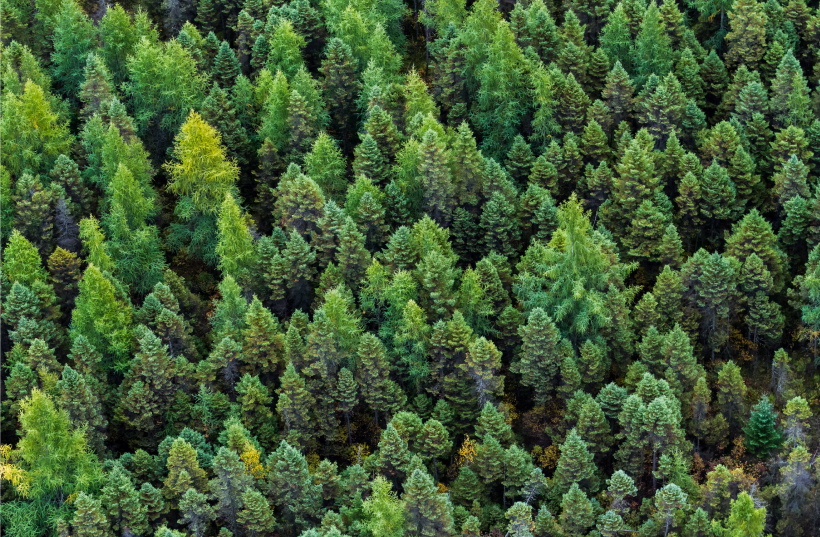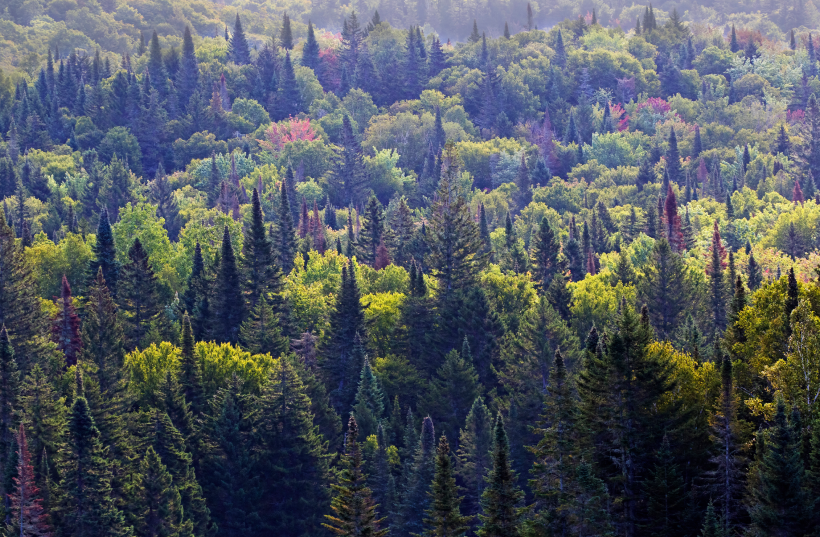The Characteristics of Forest Regions
To access the other sheets in the Forest Regions unit, check out the See Also section.
Types of Forests
Boreal Forest
|
Location |
This type of forest is in the Northern Hemisphere, including in Quebec and Norway. |
|---|---|
|
Composition |
Mostly conifers, such as black spruce, fir and pine |
|
Temperature |
|
|
Precipitation |
Low (25 to 50 cm per year[1]) distributed over 12 months |
|
Soil |
Acidic, therefore, not very fertile Acidic soil has a pH below 7. This acidity is caused by, among other things, organic matter deposited on top of the soil that does not decay quickly enough. |

A boreal forest landscape in Quebec
Source: PatrickLauzon, Shutterstock.com
Temperate Forest
|
Location |
This type of forest is primarily located in the Northern Hemisphere, between the 25th and 50th parallel[2]. It is found in North America, Europe and northeastern Asia, among other places. |
|---|---|
|
Composition |
Deciduous trees and conifers, such as birch, poplar, fir, maple and pine |
|
Temperature |
|
|
Precipitation |
Abundant (75 to 250 cm per year[1]) |
|
Soil |
Rich in organic matter and nutrients, therefore fertile |
Find out more!
Deciduous Forest or Mixed Forest?
These two types of forests are categorized as temperate forests:
-
Mixed forests consist of deciduous and coniferous trees, and are located between boreal forests and deciduous forests
-
Deciduous forests are usually found south of mixed forests and primarily consist of deciduous trees

Landscape of temperate forests
This is a mixed forest located in the Laurentides regions of Quebec.
Source: Mircea Costina, Shutterstock.com
Tropical Forest
|
Location |
This type of forest is found between the Tropics of Cancer and Capricorn, which includes South America and Central Africa. |
|---|---|
|
Composition |
Deciduous trees, such as mahogany, cacao, banana and afrormosia This type of forest also differs from other types of forests by its very dense vegetation. |
|
Temperature |
Hot and humid year-round |
|
Precipitation |
Very abundant (300 to 500 cm per year[1]) |
|
Soil |
Poor in nutrients, therefore, not very fertile |

A tropical forest landscape
This is the Amazon forest in Brazil, close to Manaus.
Source: Photo700BR, Shutterstock.com
Find out more!
Virgin Forest
A virgin forest is composed of native species that grew naturally, that is, without being planted by humans. There are no visible traces of human activity in these forests[3]. A forest that has previously been logged can return to a virgin state if it is not logged for several hundred years.
A virgin forest can be a boreal, temperate or tropical forest.
A native species, in ecology, refers to a plant or animal species that naturally grows or lives in a particular region.
Exercice
The Roles of Forests
Ecological (or Environmental) Role
-
The forest is a habitat for fauna and flora.
-
It helps to conserve biodiversity.
-
It contains vegetation, such as trees, shrubs and plants, that capture carbon dioxide (CO2) from the atmosphere and produce oxygen (O2) through the process of photosynthesis. The oxygen produced is then used by all living organisms.
-
It protects the soil from landslides and erosion caused by rain and wind.

-
Biodiversity refers to the diversity of species (animals, plants, bacteria, fungi and protists) and ecosystems in a given territory.
-
Erosion is the deterioration of the soil under the effect of wind, rain or human activity.
-
Fauna refers to animal species living in a given territory.
-
Flora refers to plant species present in a given territory.
Economic Role
The exploitation of wood, a renewable resource:
-
creates jobs
-
produces lumber
-
produces firewood
-
produces pulp and paper
The recreational tourism industry:
-
creates jobs
-
enables outdoor activities
-
enables hunting and fishing
The exploitation of other forest products:
-
creates jobs
-
enables trade in these products (mushrooms, maple syrup, berries, etc.)

-
Lumber refers to wood used for construction, such as planks and beams.
-
Recreational tourism is a form of tourism based on outdoor activities.
Forests provide opportunities for:
-
relaxation
-
sports, arts and spiritual activities
-
the study of nature
-
the practice of traditional activities for many Indigenous communities

Exercices
See Also
The Forest Regions
To access the rest of the unit, you can consult the following concept sheets.

Social and Cultural Role